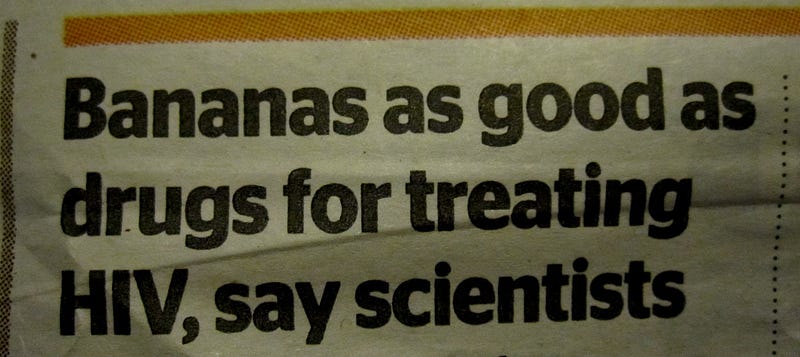The Risks of Misleading Science Journalism: A Critical Look
Written on
Understanding the Landscape of Science Communication
Scientific communication involves researchers sharing their discoveries with the public. This process, while often straightforward and factual, can lack excitement. These findings are typically published in specialized scientific journals.
Conversely, scientific journalism is the domain of reporters who aim to captivate audiences with intriguing stories. This often leads to sensational headlines that may exaggerate facts to draw in readers, primarily found on news platforms.

The gap between scientific communication and journalism is widening, posing significant risks.
The Perils of Exaggeration in Health Reporting
While a bit of embellishment in reporting isn’t inherently harmful, it becomes a serious issue when it concerns health. Imagine stumbling upon a headline proclaiming, “Want to lose weight and live longer? Eat chocolate.” Naturally, this piques interest. The article claims that research from Harvard University indicates that individuals who indulge in a modest amount of chocolate tend to live nearly a year longer than those who abstain. This is attributed to the antioxidants in cocoa, similar to those in red wine, which purportedly offer cancer protection.
But before rushing to enjoy chocolate and wine daily, a closer examination of the article is warranted. Upon investigation, I noticed that the article lacked a link to the original research. Was it an oversight?
Searching online with the keywords “Harvard University study chocolate longer life,” I found various news articles referencing the same study, yet none led me to the scientific source.
Eventually, I discovered one article that noted the study was published in the BMJ (British Medical Journal). After reading the original publication, my enthusiasm waned; the details didn’t align with the sensational claims. The participants who experienced the longest lifespans consumed candy only 1–3 times a month.
The study suggested that candy consumption correlated with increased longevity, but moderation was essential. The New York Post’s interpretation framed chocolate as the hero, attributing its longevity benefits to antioxidants. However, the original research clarified that candy, not specifically chocolate, was associated with longer lifespans. They even noted, “We could not differentiate between consumption of sugar candy and chocolate in our study.” Thus, concluding that chocolate boosts lifespan through its antioxidant properties is misleading, as candy typically lacks these antioxidants.
Moreover, the study included both a control group (non-candy consumers) and an experimental group (candy consumers) to explore cause and effect. It's challenging to establish such relationships in human studies due to numerous uncontrolled variables. The control group, for example, had higher rates of alcohol consumption and smoking compared to the experimental group. Therefore, did the candy consumers live longer because of their sweet indulgences, or did the non-candy group have shorter lives due to their unhealthy habits?
Even if the study is credible, its conclusions are problematic. One cannot assert that increased chocolate intake leads to weight loss and a longer lifespan based on this research.
The Dangers of Unquestioned News Consumption
Many readers engage with news articles without scrutinizing their sources. This is where the hazards of scientific journalism manifest. If one reads a headline like “Want to lose weight and live longer? Eat chocolate” without verifying the original research, they might be tempted to incorporate chocolate into their daily diet, believing it will enhance their health. This misstep could be detrimental rather than beneficial.
While misleading articles pose risks, numerous reports serve the public good.

Essential Articles for Public Awareness
Reports like these help illuminate the hidden ingredients in medications that could trigger allergies, raise awareness about cosmetic safety regulations, and inform about vaccination coverage gaps related to measles outbreaks. Such articles are invaluable in helping us navigate health-related decisions.
Science journalism plays a critical role in public health, but verifying sources is essential to ensure the information is accurate. You don’t need to be a scientist to identify misleading science news; a healthy dose of skepticism is all it takes. Scientific literature can be daunting, yet understanding it is crucial. Here’s a guide to assist in deciphering scientific studies referenced in news articles:
How to Read Scientific Papers (for the non-scientist)
Because scientific data should be accessible to everyone.
Neil deGrasse Tyson discusses the challenges faced by science journalism and the importance of accurate communication.
Connector Chat: Science Journalism in the Misinformation Era
This discussion covers the impact of misinformation on science communication and the need for responsible journalism.
Did you find this article insightful? Share your thoughts! More from Journal